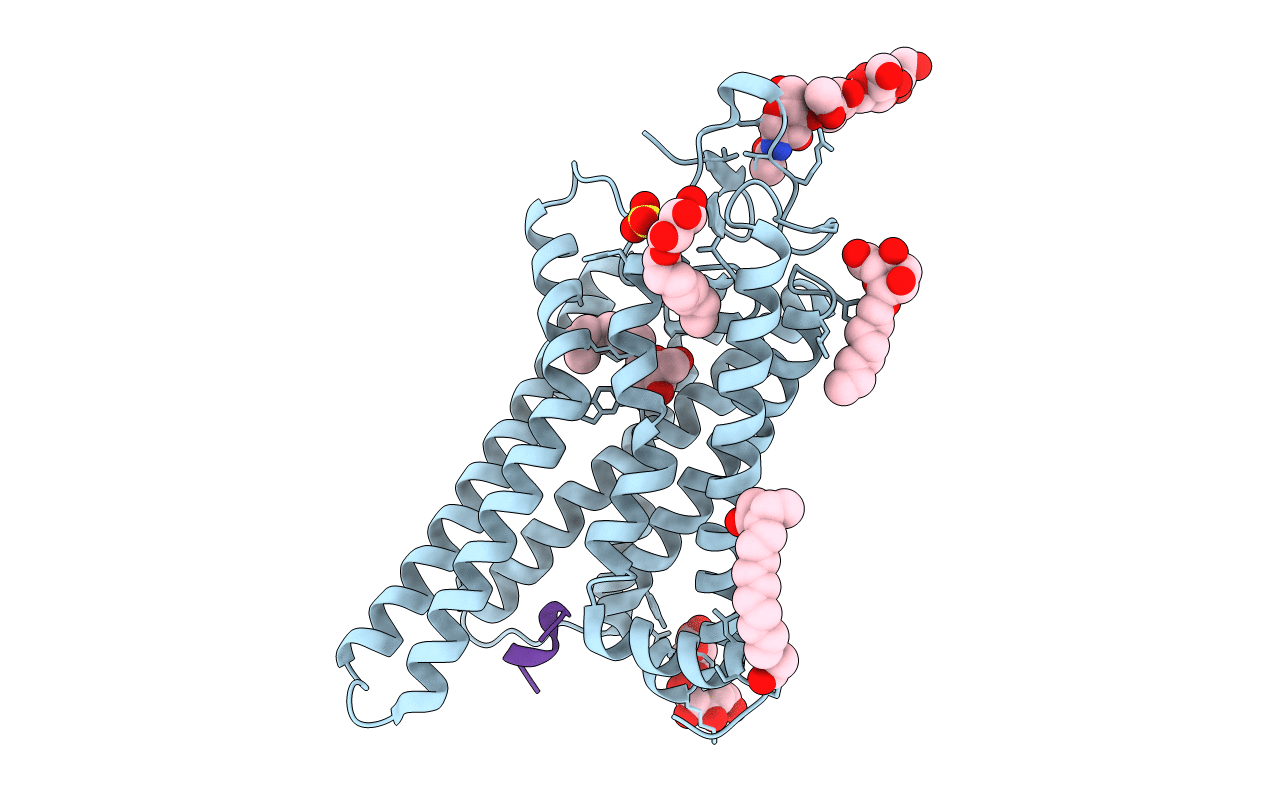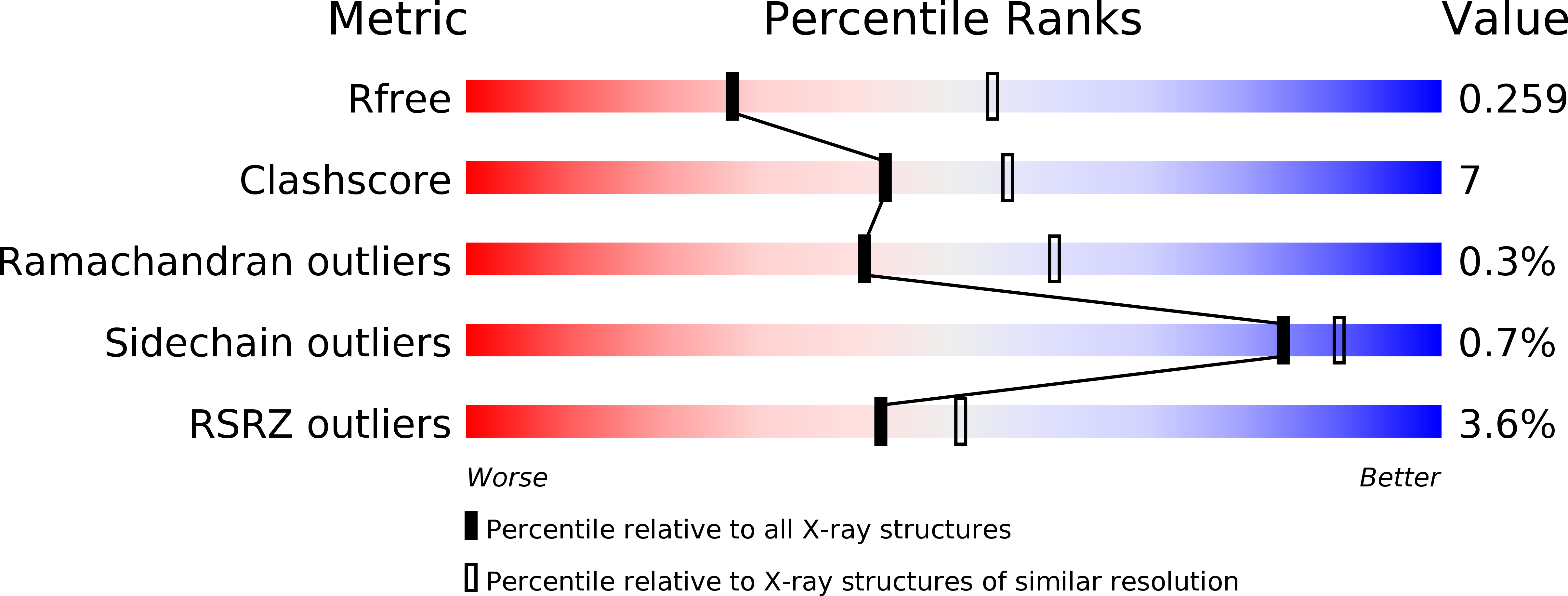
Deposition Date
2014-03-23
Release Date
2014-09-17
Last Version Date
2024-10-09
Entry Detail
PDB ID:
4PXF
Keywords:
Title:
Crystal structure of the active G-protein-coupled receptor opsin in complex with the finger-loop peptide derived from the full-length arrestin-1
Biological Source:
Source Organism:
Bos taurus (Taxon ID: 9913)
Method Details:
Experimental Method:
Resolution:
2.75 Å
R-Value Free:
0.25
R-Value Work:
0.21
R-Value Observed:
0.21
Space Group:
H 3 2


